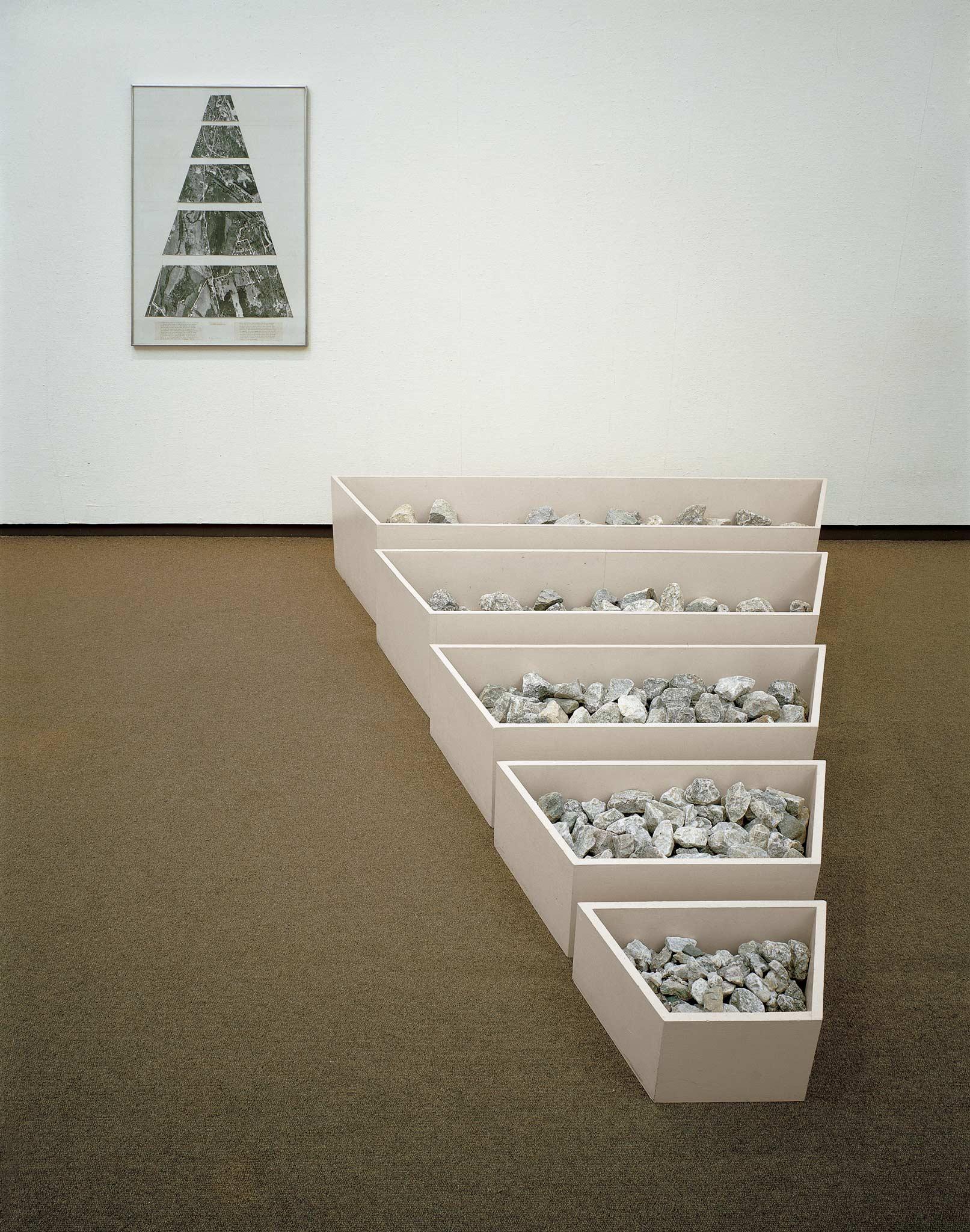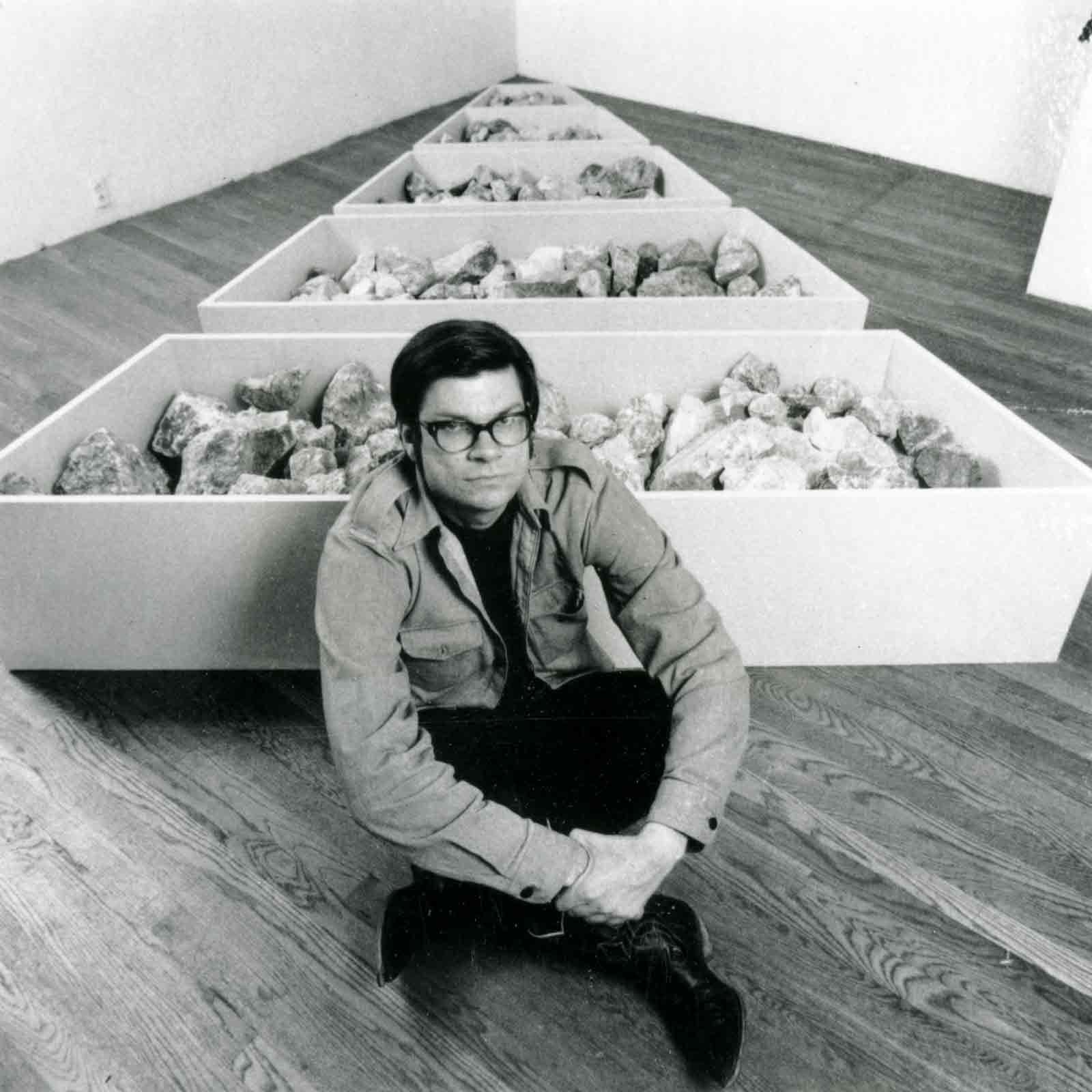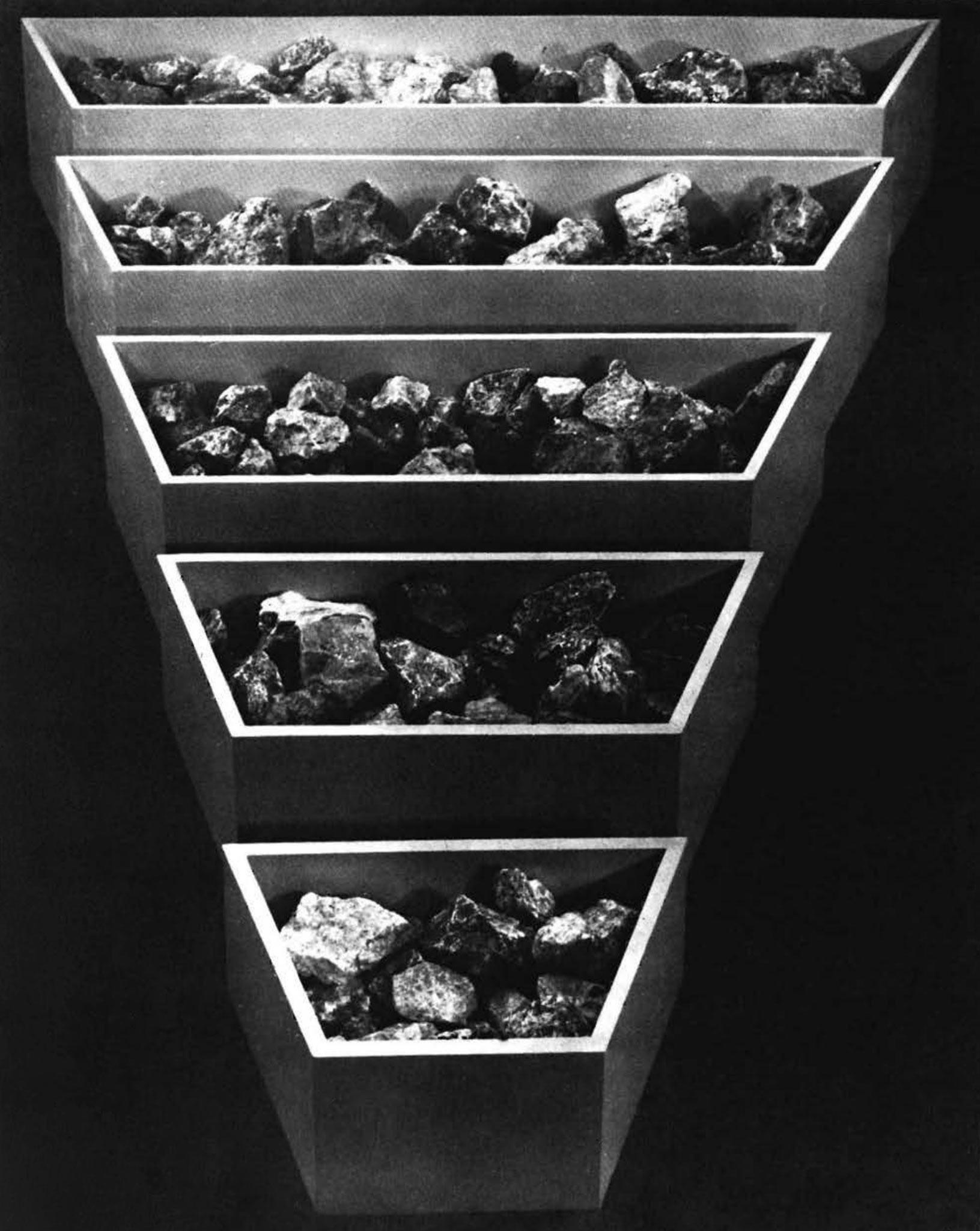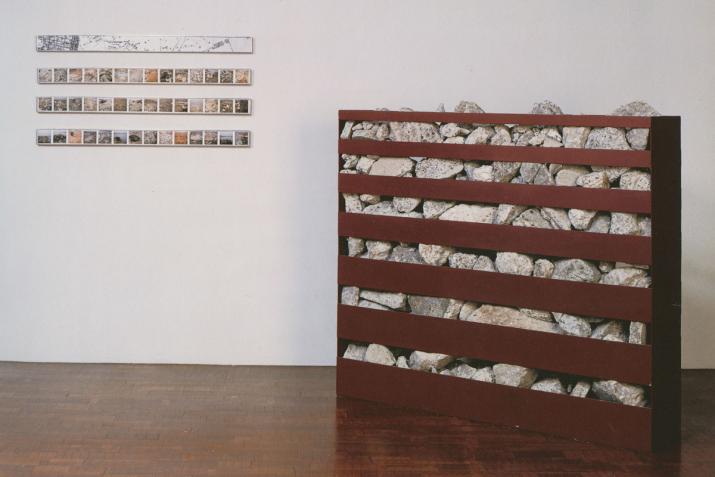
Robert Smithson, "A Nonsite (Franklin, New Jersey)" (1968)
In 1968, Robert Smithson realized an important group of works he collectively called Nonsites. This series features bin-like structures in which the artist deposited rocks, sand, broken concrete, and other elements he collected at various sites in New Jersey. Accompanying these sculptures, Smithson hung on gallery walls photographs he’d snapped at the same Garden State locations, as well as fragments of maps that could lead other people to these places. He repeatedly declared that where he had gathered his materials—whether it was the Pine Barrens, Franklin, Bayonne, or Edgewater—was as much a part of the experience of his endeavor as the freestanding, seemingly independent work.




